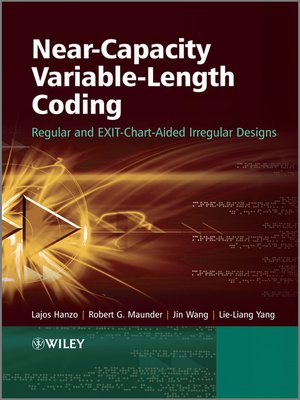Near-Capacity Variable-Length Coding
ebook ∣ Regular and EXIT-Chart-Aided Irregular Designs · Wiley--IEEE
By Lajos Hanzo

Sign up to save your library
With an OverDrive account, you can save your favorite libraries for at-a-glance information about availability. Find out more about OverDrive accounts.
Find this title in Libby, the library reading app by OverDrive.



Search for a digital library with this title
Title found at these libraries:
| Library Name | Distance |
|---|---|
| Loading... |
The book commences with an introduction to Information Theory, followed by a discussion of Regular as well as Irregular Variable Length Coding and their applications in joint source and channel coding. Near-capacity designs are created using Extrinsic Information Transfer (EXIT) chart analysis. The latest techniques are discussed, outlining radical concepts such as Genetic Algorithm (GA) aided construction of diverse VLC codes. The book concludes with two chapters on VLC-based space-time transceivers as well as on frequency-hopping assisted schemes, followed by suggestions for future work on the topic.







